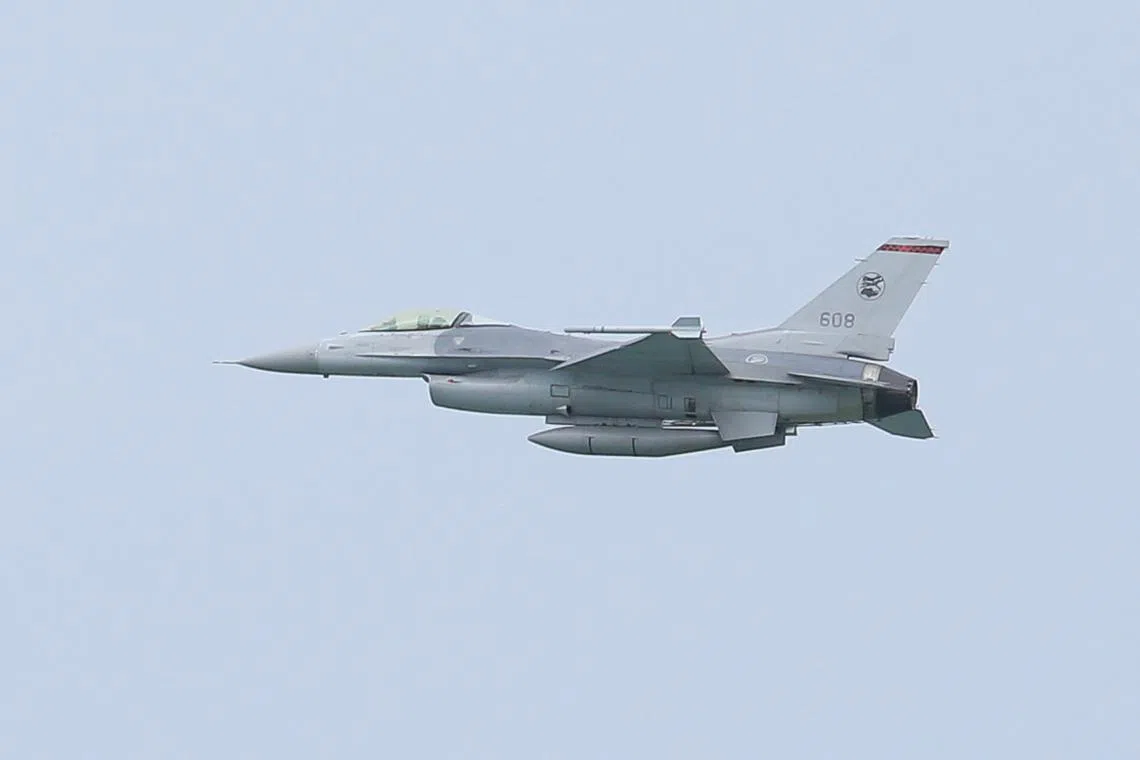RSAF F-16 crash caused by component malfunction; fleet to resume flying: Mindef
Sign up now: Get ST's newsletters delivered to your inbox

The RSAF and Lockheed Martin will carry out further studies to find out what caused the gyroscope malfunction that resulted in the crash.
PHOTO: ST FILE
Follow topic:
SINGAPORE - The cause of the crash of the F-16C single-seat fighter jet inside Tengah Air Base on May 8 has been determined, and the F-16 fleet will resume flying.
In a statement on May 18, the Ministry of Defence (Mindef) said the flight data recorder recovered
This resulted in the pilot being unable to control the plane at take-off, the detailed investigations by the Republic of Singapore Air Force (RSAF) and F-16 manufacturer Lockheed Martin showed.
Pitch rate gyroscopes are components in the aircraft that provide one of the signals needed to send the correct data to the flight control computer to control the aircraft, former RSAF pilot Ong Swee Chuan told The Straits Times.
“As a result of the gyroscopes giving wrong data to the flight control computer, the aircraft will not be able to be controlled by the pilot,” said Mr Ong, adding that it would also depend on how the gyroscopes failed.
All F-16 fighter jets are fitted with four such gyroscopes and more than one gyroscope had failed in the crash, said Mindef.
It added that the simultaneous failure of the gyroscopes is a “very rare” occurrence.
This is the first such simultaneous malfunction of the pitch rate gyroscopes for the RSAF’s entire F-16 fleet that has operated for over 35 years, said Mindef.
It added that Lockheed Martin does not stipulate any maintenance for the pitch rate gyroscopes in the F-16 aircraft.
The RSAF and Lockheed Martin will carry out further studies to find out what caused the gyroscope malfunction that resulted in the crash.
The RSAF F-16 fleet will resume flying but, as an added precaution, each F-16 pitch rate gyroscope will be checked and cleared before resumption of flights, said Mindef.
The May 8 crash


